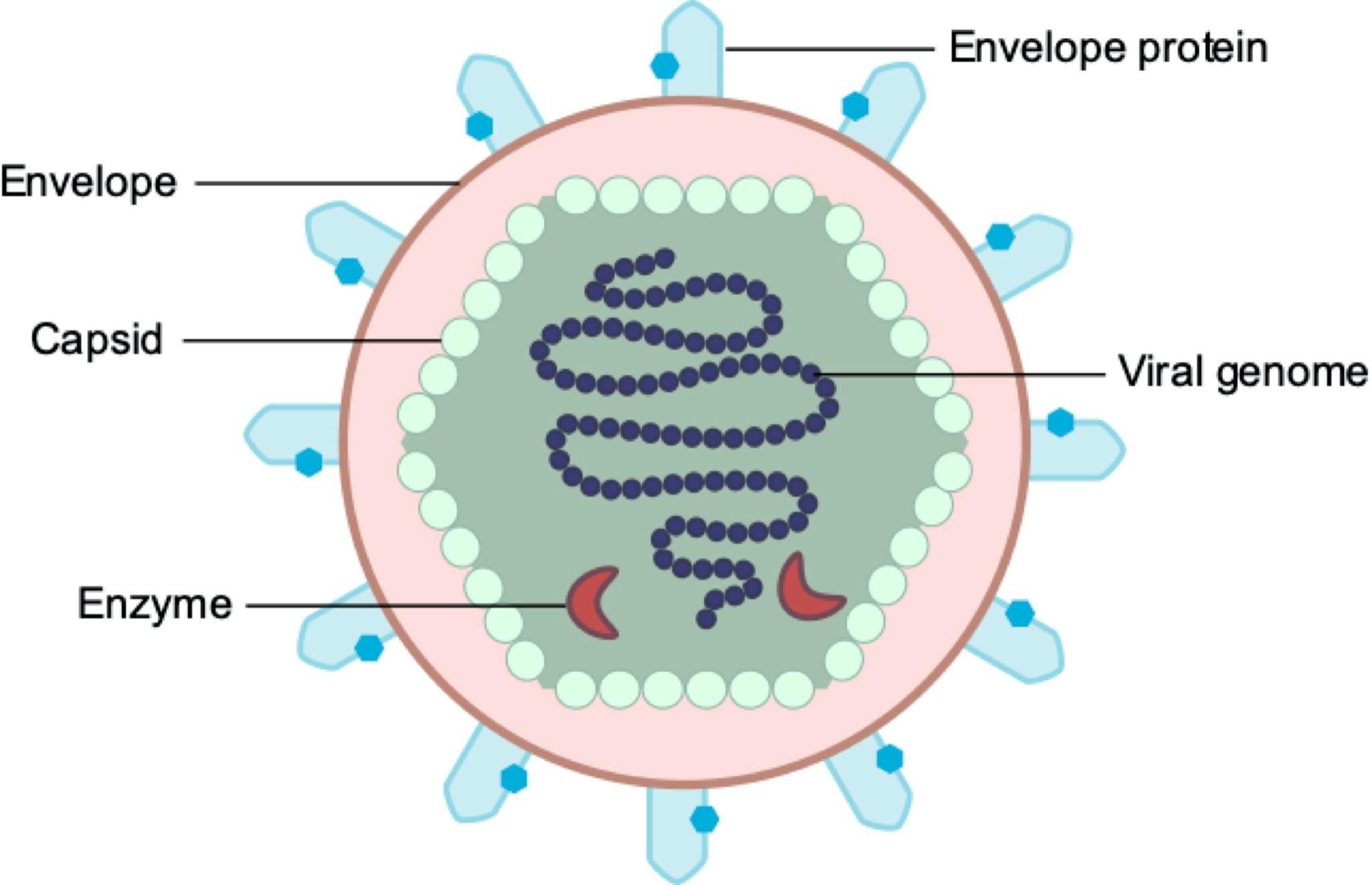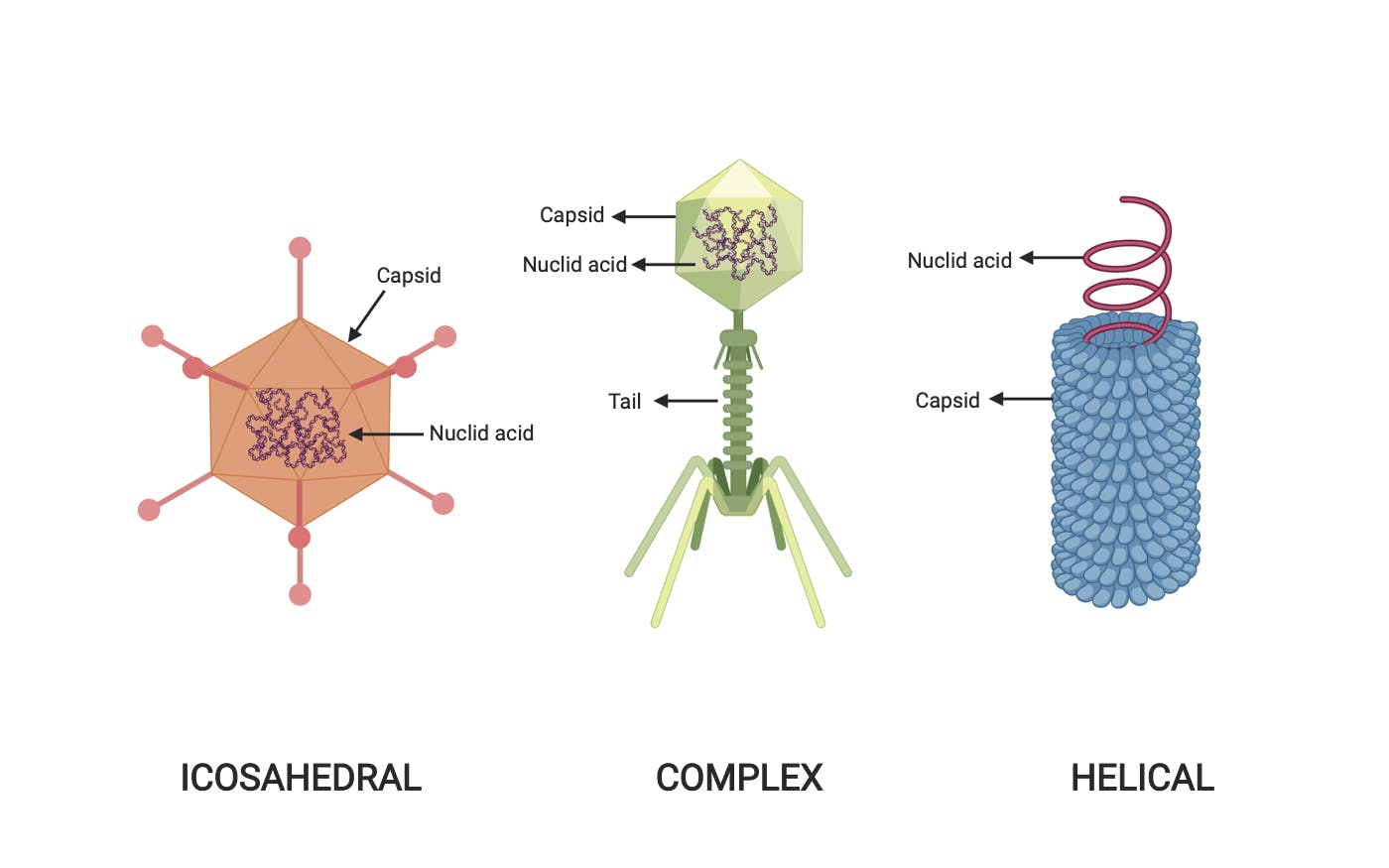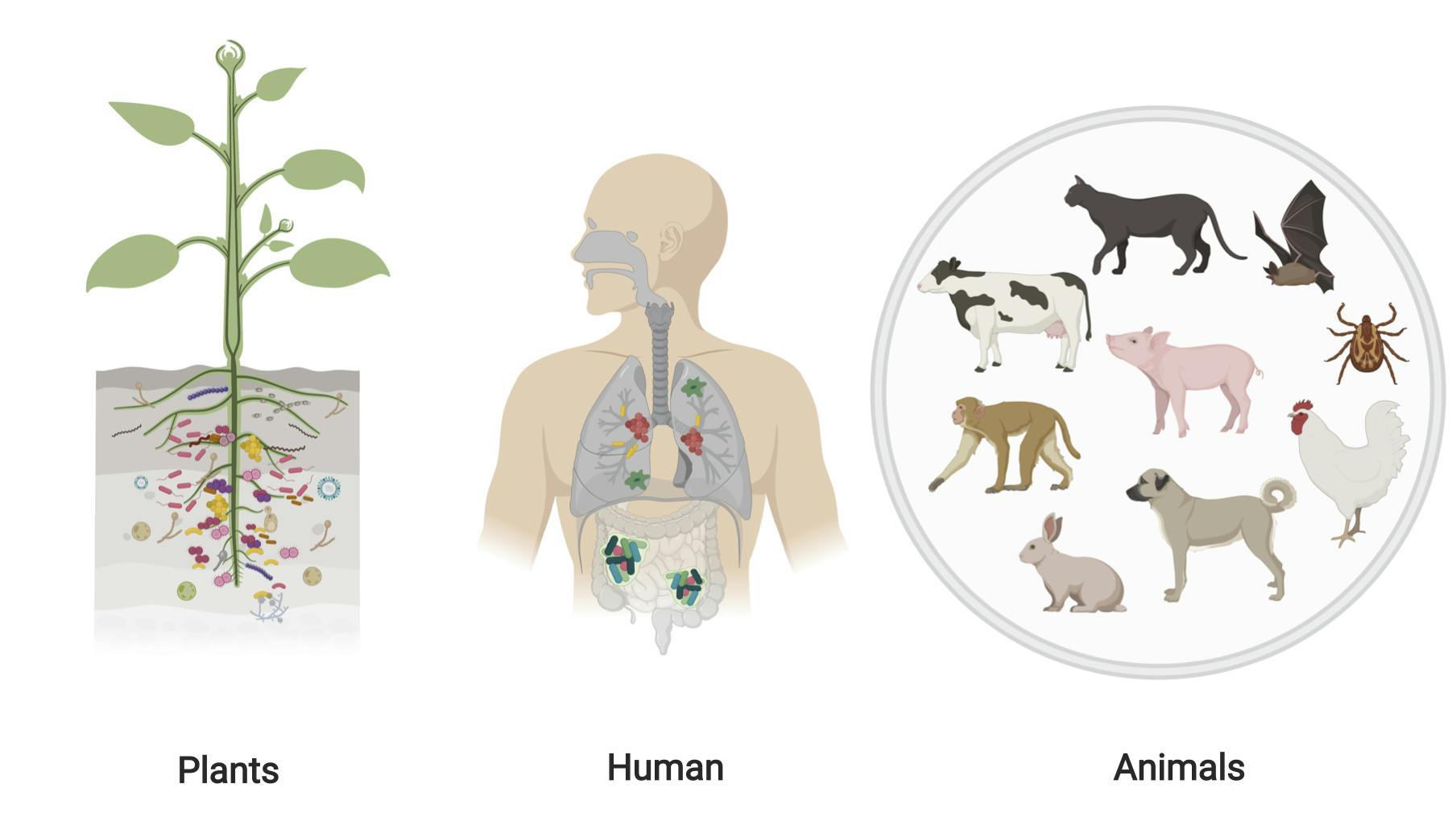Skip to content

 Virus
Virus
What are viruses?
Viruses are biological agent that reproduce inside the cells of living hosts. Unlike most living things, viruses do not have cells that divide; viruses depend on their host cell for all aspects of the viral life cycle.
Viruses infect all living things including humans, insects, plants, bacteria, and even other viruses.
Many viruses are specific to which host species or tissue they attack.
Viruses are not solely pathogenic nuisances; they can be beneficial. Viruses contribute to ecological homeostasis, keep our immune responses activated and alert, and can be used as molecular flashlights to illuminate cellular processes.

Graphical representation of a virus.
Viruses can be cataloged based on their appearance, the hosts they infect, or the nature of their nucleic acid genome.
Genetic material: Viruses have either RNA (Ribonucleic Acid) or DNA (Deoxyribonucleic Acid) as their genetic material. The vast majority of viruses have RNA genomes. Plant viruses tend to have single-stranded RNA genomes while bacteriophages tend to have double-stranded DNA genomes.
Type of strand: We often think of DNA as double-stranded and RNA as single-stranded, since that's typically the case in our own cells. However, viruses can have all possible combos of strandedness and nucleic acid type (double-stranded DNA, double-stranded RNA, single-stranded DNA, or single-stranded RNA). The viral genome may be single (ss) or double stranded (ds).
Sense of strand: The genome of an RNA virus can be said to be either positive-sense, also known as a "plus-strand", or negative-sense, also known as a "minus-strand". In most cases, the terms "sense" and "strand" are used interchangeably, making terms such as "positive-strand" equivalent to "positive-sense", and "plus-strand" equivalent to "plus-sense". Whether a viral genome is positive-sense or negative-sense can be used as a basis for classifying viruses.
Capsid: The capsid, or protein shell, of a virus is made up of many protein molecules (not just one big, hollow one). The proteins join to make units called capsomers, which together make up the capsid. Capsid proteins are always encoded by the virus genome, meaning that it’s the virus (not the host cell) that provides instructions for making them.
This capsid might be covered by an outer membrane called Enveloped, when the envelop is not present, the virus are called Naked.


Graphical representation of an enveloped virus
Capsid symmetry: The capsid symmetry refers to the way capsid units are arranged. Capsid symmetry can be Helical (Also known as Rod or Spiral i.e Tobacco mosaic virus), Icosahedral (Also known as Spherical or Cubical i.e Poliovirus) and Complex (i.e. Pox virus) being composed of several separate capsid units (head and tail).


Graphical representation of Capsid symmetry
Pathogen: Pathogenic viruses are viruses that can infect and replicate within cells and cause diseases to the host. Among several high-impact pathogenic viruses which emerged recently include Ebola virus, avian influenza virus, SARS coronavirus and Zika virus. Not all viruses are pathogenic, only those affecting the host health are being considered pathogenic. Opportunists are microbes that take advantage of factors that may not be commonly available, such as a host that is immune deficient. At the Microb Directory, we only consider pathogenic those microbes that affect their hosts in normal conditions.
More info:
Host: is an organism that harbors another organism inside or near their body in a symbiotic relationship. Host can be from plants, animals, bacteria to humans. Sometimes an organism can have multiple hosts.


Graphical representation of potential hosts.
Want to print your doc?
This is not the way.
This is not the way.

Try clicking the ··· in the right corner or using a keyboard shortcut (
CtrlP
) instead.